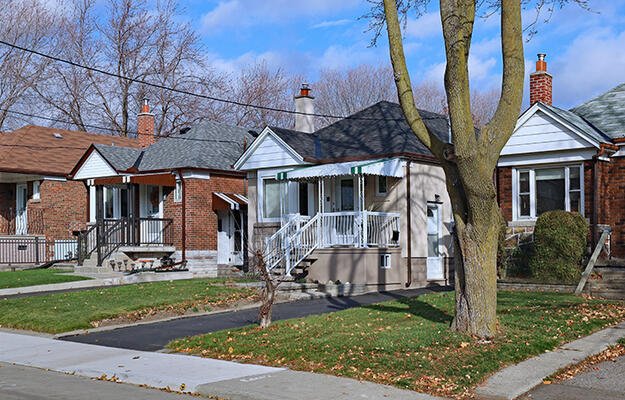
How HUD and Public Housing Authorities Can Support Students
by Martha Galvez and Megan Gallagher
Public schools and public housing authorities (PHAs) share the work of serving some of the nation’s poorest children. Nationwide, nearly 30 percent of all poor children and 58 percent of African American children live in US Department of Housing and Urban Development (HUD)–assisted housing. It is very likely that the majority of these children attend their local public schools. In Seattle, for example, about 12 percent of all public school students live in HUD-assisted housing.
Given their shared population, it is not surprising that some school districts and housing authorities are finding ways to work together. Schools have a direct interest in strengthening their connections with low-income families to support academic achievement outside school hours. PHAs, meanwhile, view academic achievement as the most important path to financial stability for children growing up in assisted housing. Ideally, housing stability, whether through public housing or privately-operated affordable housing, would allow low-income students to take full advantage of academic opportunities and avoid needing housing assistance as adults.
Housing assistance alone is no guarantee of academic achievement, however. Research shows that low-income families, including those in assisted housing, regularly experience hardships like food insecurity, health problems, and chronic violence that can affect students’ attendance and performance at school. Research on the neighborhoods where Housing Choice Voucher holders live suggests that, despite vouchers theoretically giving households more options about where to live, children in voucher households do not reach neighborhoods with high-performing schools. Preliminary evidence from Seattle, for example, suggests that PHA students are lagging behind their peers in important markers of academic success, like attendance, discipline, and reading and math proficiency.
What are partnerships doing to address these issues?
Most partnerships start at the most basic point: identifying their shared students, typically through data-sharing agreements. Some housing authorities have hired education experts, who understand the local school system and can help families navigate issues like transportation, discipline, standardized testing, and school choice. Others have set aside space in community centers for early learning programs, computer labs, parent programs, and after-school and summer learning opportunities. Some partnerships pilot programs to support students and their families; in Seattle, the partnership is developing long-term approaches to targeting shared students. In some cases, the housing authorities’ ability to hire staff and test ideas comes from local philanthropic partners, but more typically, these partnerships involve housing authorities with Moving to Work (MTW) status. PHAs with MTW authorization have funding and policy flexibility to direct resources to nonhousing activities, as long as the shift does not reduce the number of families who receive housing:
- In Washington State, housing authorities in Seattle, Vancouver, King County, and Tacoma are each working to enhance education outcomes like attendance and graduation for their residents through various school- and family-based programs. Seattle’s approach is a systemwide effort in which the school superintendent and the housing authority executive director meet regularly to discuss shared problems and identify solutions.
- In New Haven, Connecticut, the PHA provides case management, and other educational supports are available to help all students excel academically, to help parents support their children’s learning, and to improve access to postsecondary opportunities.
- In Akron, Ohio, the housing authority owns and operates a community-based education resource center with the school district and provides home visiting and services for mothers experiencing maternal depression.
- Boulder Housing Partners in Boulder, Colorado, has partnered with the national I Have a Dream Foundation to offer Bringing School Home, which provides mentors, after-school programs, and funding for postsecondary education to children living in public housing.
How can HUD integrate these education opportunities into the MTW expansion?
With the expansion of MTW to 100 new PHAs over the next seven years, HUD has an opportunity to create baseline requirements for all newly designated agencies and to test innovative practices at cohorts of new agencies.
HUD can require that new MTW agencies that serve large numbers of families with school-age children pursue partnerships with their local school districts. Initial goals for these partnerships can be modest: establish regular and formal communication and relationships; and establish data-sharing agreements and analysis plans to identify the number of shared students, the locations of these students (e.g., which schools have the largest proportions of PHA students), and information about how PHA students are faring relative to their peers. Several PHA and school district partnerships have already made progress on these goals. HUD can provide technical assistance and guidance to housing authorities and schools about how to craft data-sharing agreements that are compliant with privacy regulations, and with navigating complex federal and state requirements around student data security and privacy.
HUD should also learn everything it can from promising existing models of PHA-school partnerships. Future cohorts of MTW agencies can test different school-, home-, or student-focused interventions that leverage housing authority and school district relationships and resources to affect student outcomes.
Some housing authorities and school district partnerships will need technical and financial support from local partners, HUD, and the philanthropic community to effectively test and evaluate their ideas, share what works, and sustain their efforts. But the MTW expansion is an important opportunity for HUD to help housing authorities start the process and think creatively about education partnerships—and to learn about strategies that might be expanded nationwide.
While effective partnership efforts often emerge from MTW, the opportunity to engage with schools and early education goes beyond MTW and beyond housing authorities. With a strong network of community support, willing partners, and public or philanthropic investment, school-housing partnerships could expand even further among the full range of affordable housing providers to make a difference in even more low-income children’s lives.
An earlier version of this post was published as part of a series of evidence-based ideas for programs and policies public housing agencies can test through the US Department of Housing and Urban Development’s Moving to Work Demonstration. The series will run throughout September 2016 on Urban Wire, the blog for the Urban Institute.


